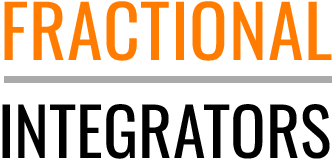As a CPA, I have worked with many small/medium-sized professional service firms as their CFO. The one thing they all have in common is people issues. However, people are also the lifeblood of your business. So how do we solve this issue?
When I discovered the Entrepreneurial Operating System (EOS) the biggest lesson I learned was that the Accountability Chart is king. Having the Right People in the Right Seats (or as Jim Collins says, “get the right people on the bus and the wrong ones off”). By the right people, EOS means people who share your core values. By right seats, EOS means that each person is filling a position in your company that they understand, and want, and is in a seat for which they have the capacity. Capacity is defined in many ways, – intellect, energy, time, and skills among others. EOS shorthand for this is GWC, – Gets It, Wants it, and has the Capacity for it. But an often overlooked tool in the EOS Toolbox can help solve that, the Delegate and Elevate exercise.
What is the Delegate and Elevate exercise? Make a list of all the tasks you do in a week (take your time, making a list as you go through your week is easiest instead of remembering everything all at once). Once you have determined the essential tasks, you catalog them.
- Tasks you don’t like to do AND you are not good at This is the easy one: you will need to delegate these ASAP as they are draining you.
- Tasks you don’t like to do but are good at These are harder, and you are good at them, but would someone else have this in their love/good-at quadrant?
- Tasks you like to do and are good at Ok to keep, but consider if you have someone who loves to do this.
- Tasks you love to do AND you are great at This is what gives you energy, need to keep these tasks!
Once you complete this, the next step is to determine the “who” not the how to get these tasks done (a concept explored in depth in Dan Sullivan’s book “ The Who not How”). Take every task, not on your top quadrants, and assign it to another role on the accountability chart’s core responsibilities. Once you decide, have a 1-1 meeting to make sure that the person in that role understands the new responsibilities’ success criteria and make sure to follow up with them regularly.
Delegating to the correct seat on the accountability chart and freeing up your time (or their manager’s time) can help solve Right People Right Seats issues. How? Let’s discuss the basics.
Some reasons for not delegating are legitimate. For example, if an organization is understaffed or managers have no one reporting to them, obviously it is very difficult to delegate responsibilities. However, most such arguments do not stand up to rational analysis. Managers need to delegate because they are not supposed to do all the work themselves. The company hired people for a reason, they want and need them to do their jobs. They need to interact with other managers about goals; plan for possible changes in economic conditions, competitive factors, and the like; and communicate with other managers about how to improve operations and develop new strategies. In addition, managers need to devote time to their own development through training and by keeping up with technology and other innovations relevant to their industry and their organization.
Managers are responsible for developing their employees to ensure that they are well trained, to identify future leaders, and to prepare their own successors when they move up or move on to other organizations. Delegating responsibility is a powerful statement to employees about how much they are trusted and how competent and valued they are in the company. It can also help to determine who in the organization is not thriving in their current seat. If delegating tasks that should be completed by that employee, can shine a light on the issues with that person being the RPRS. Having a manager continue to complete those tasks, will prolong the process unnecessarily.
Getting your Accountability chart correct is one of the best ways to make sure that everyone in your organization is rowing in the same direction. Starting with a Delegate and Elevate Exercise for your managers is one tool in the EOS toolbox to help correct any RPRS issues. By following these steps, you can ensure that each person in your organization is in the right role, has the necessary authority and resources to execute their functions, and that they understand how they contribute to the success of the company. This will help to create a more engaged and motivated workforce, and ultimately lead to better business results.
